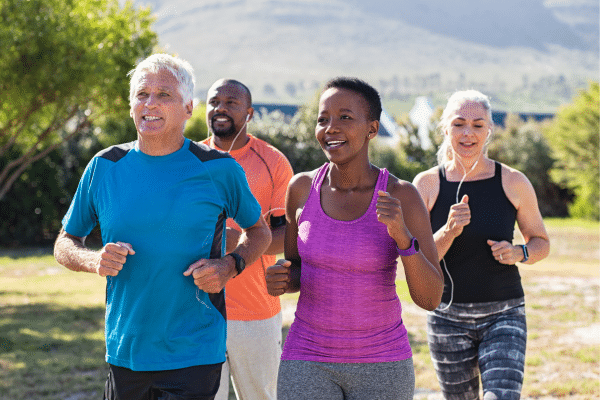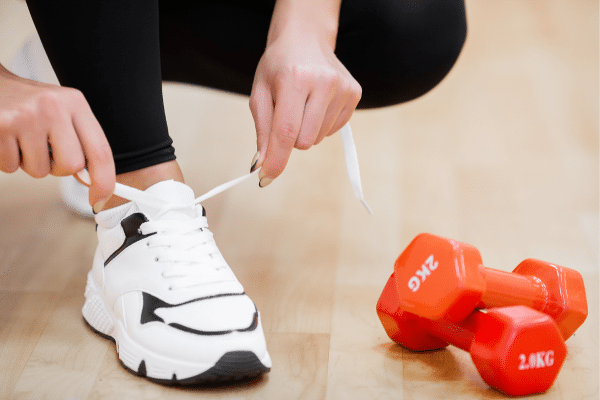Aging gracefully isn’t just a matter of genetics; it’s a lifestyle choice that hinges significantly on maintaining an active routine. The journey toward a healthier, more vibrant life in the later years is marked by both challenges and opportunities. Understanding the significance of fitness and adapting one’s lifestyle accordingly can lead to profound improvements in quality of life. This exploration into staying fit as one ages offers a comprehensive guide to embracing physical activity, ensuring that the golden years are not just endured, but enjoyed.
Contents
The Importance Of Physical Activity

Physical activity stands as a cornerstone in the edifice of aging well. Regular engagement in exercise is scientifically proven to ward off numerous age-related ailments, from cardiovascular diseases to cognitive decline. More than just a preventive measure, physical activity boosts vitality, ensuring that muscles, bones, and joints remain robust enough to enjoy an active lifestyle. Embracing a routine that includes consistent physical activity is not just about adding years to life, but more importantly, adding life to those years.
Beyond its physical benefits, exercise is a potent elixir for mental health. It’s a natural mood enhancer, combating the blues often associated with aging and isolation. Engaging in physical activity releases endorphins, creating a sense of wellbeing and resilience against stress. Moreover, it opens doors to social interactions, be it through group exercises, community sports, or simply shared walks in the park, fostering a sense of connection and belonging that is crucial in later years.
Creating A Balanced Fitness Routine

Embarking on a fitness journey necessitates a balanced approach, one that harmonizes cardiovascular workouts, strength training, and flexibility exercises. Cardiovascular exercises, such as brisk walking or swimming, are pivotal in maintaining heart health and endurance. They invigorate the spirit and are often the first step towards a fitter life.
Complementing cardio with strength training is vital. As muscle mass naturally diminishes with age, engaging in resistance exercises becomes paramount in preserving muscle strength, ensuring that daily activities can be performed with ease. Furthermore, incorporating flexibility and balance exercises into the routine is crucial. Activities like yoga or tai chi not only enhance flexibility but also improve balance, reducing the risk of falls, a common concern in later years. A balanced fitness routine is a symphony of different movements, each playing a vital role in crafting a resilient, agile body and mind.
Nutrition And Hydration

Nutrition is the fuel that powers the machinery of the body, especially vital when engaging in regular physical activity. As the body ages, its nutritional needs evolve, necessitating a diet rich in vitamins, minerals, and other essential nutrients to complement an active lifestyle. A balanced diet, replete with fruits, vegetables, lean proteins, and whole grains, provides the energy needed to sustain a fitness routine while warding off age-related conditions.
Hydration, often overlooked, is another key component of a fitness regimen. Water plays a critical role in maintaining bodily functions, including muscle performance and recovery after exercise. It’s essential to stay adequately hydrated, especially during and after physical activities, to ensure that the body operates optimally. Hydration is not just about quenching thirst; it’s about maintaining a balance that allows every cell to function at its best.
The Role Of Mental Health

Mental health is intricately linked to physical well-being, a bond that strengthens with age. Engaging in physical activities like yoga or meditation nurtures the mind, fostering a sense of tranquility and focus. These practices not only enhance physical flexibility and balance but also contribute to mental resilience, offering a sanctuary from the stressors of life.
Motivation can often ebb and flow, particularly when facing the inevitable physical and psychological barriers that come with aging. Setting realistic goals, celebrating small victories, and recognizing the intrinsic value of a fit and active lifestyle can be profoundly motivating. Fitness is not just a physical endeavor; it’s a mental commitment to living life to the fullest, irrespective of age.
Safety And Injury Prevention

Exercising safely is paramount, especially as the body becomes more susceptible to injuries with age. Incorporating a thorough warm-up and cool-down into every workout session prepares the body for physical activity and aids in recovery, respectively. Understanding the proper techniques and forms of exercises can significantly reduce the risk of injuries, ensuring a safe and sustainable fitness journey.
It’s vital to listen to the body’s signals and understand the difference between beneficial discomfort, indicative of muscle growth, and pain that signals potential injury. Recognizing when to push forward and when to pull back is a crucial skill. Consulting healthcare professionals or fitness experts can provide valuable insights into crafting a safe, effective fitness routine tailored to individual needs and capabilities.
Integrating Fitness Into Daily Life

Fitness should not be confined to the gym or designated workout times; it should permeate daily life. Simple alterations in routine, such as opting for stairs over elevators, engaging in active hobbies like gardening, or incorporating walking meetings, can significantly boost daily physical activity levels. These small changes, though seemingly insignificant, can accumulate, leading to substantial health benefits over time.
Social engagements centered around physical activities, such as dance classes or hiking groups, offer dual benefits: they promote physical health while fostering social connections. Finding joy in these activities can turn fitness from a chore into a cherished part of everyday life, making it a sustainable and enjoyable commitment.
Adapting To Changing Abilities

As the body ages, its abilities and limitations can change, necessitating adaptations to fitness routines. Embracing these changes and modifying exercises to fit current capabilities is not conceding defeat; it’s a smart strategy for maintaining fitness without risking injury. Whether it’s adjusting the intensity of workouts or finding new activities that are less taxing on the joints, flexibility in approach is key to a sustainable fitness regime.
There are times when professional guidance becomes crucial. Whether it’s consulting a physical therapist for post-injury exercises or seeking a fitness trainer who specializes in senior fitness, expert advice can tailor fitness routines to individual needs, ensuring that each person’s journey to fitness is both safe and effective.
The Bottom Line
Staying fit as one ages is a multifaceted endeavor that extends beyond mere physical activity. It’s about nurturing the body with proper nutrition, acknowledging the profound connection between physical and mental health, and understanding the importance of safety and injury prevention. It’s about weaving physical activity into the fabric of daily life and being adaptable to the body’s evolving needs. Above all, it’s about recognizing that it’s never too late to embrace a healthier, more active lifestyle. This journey, with its unique challenges and rewards, is a testament to the enduring strength and resilience of the human spirit.


